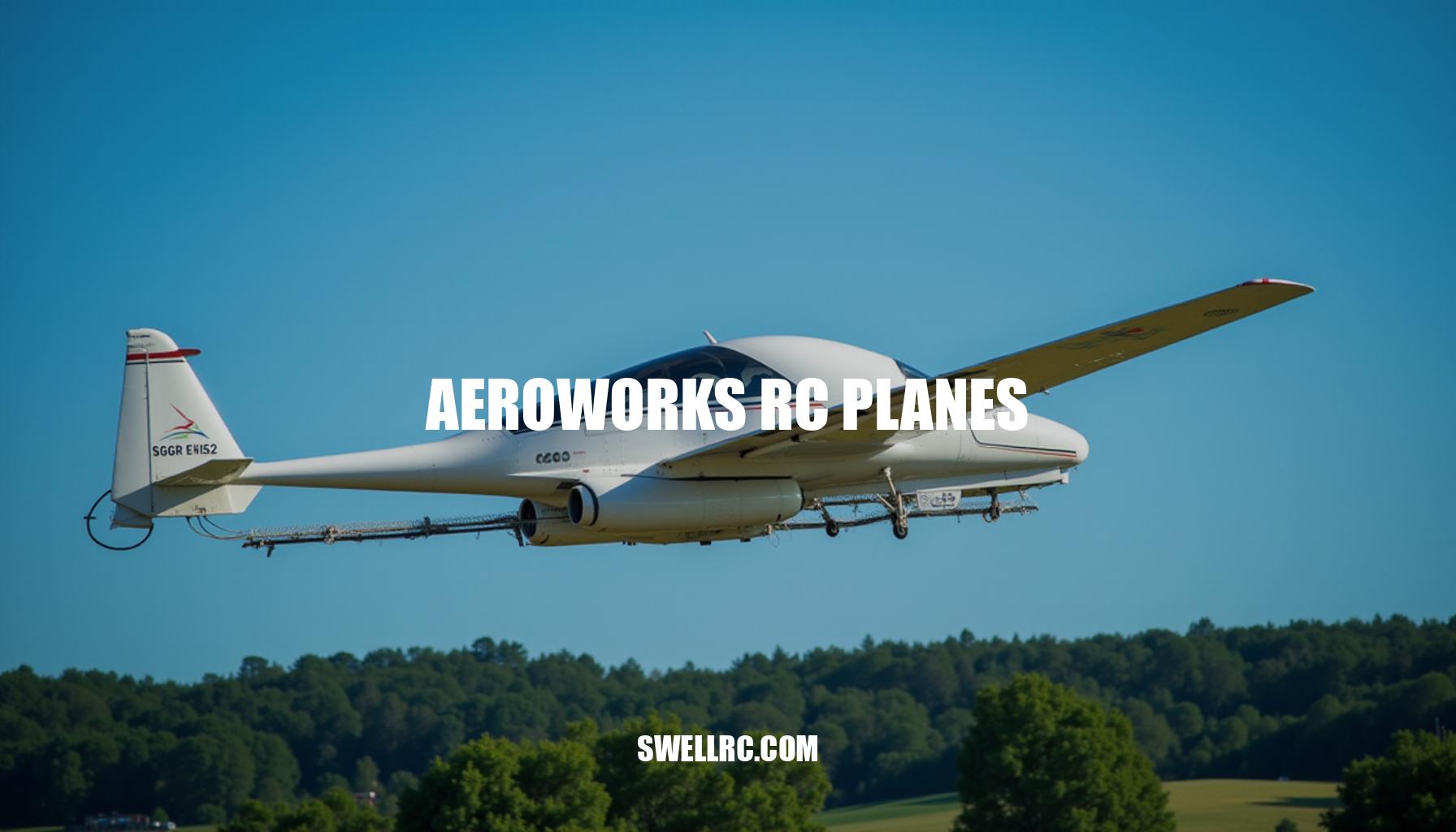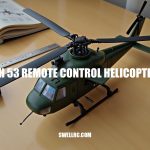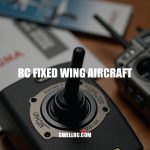Aeroworks RC Planes: Legacy of Precision Flight
There I was at the local RC club meet, drawn to a gleaming Extra resting gracefully on a corner table—an Aeroworks RC plane, impeccably maintained, its sleek lines and vibrant decals whispering stories of countless precision aerobatic flights. The sight rekindled a long-lost fascination; as an enthusiast pilot, I recalled the thrill of my first flawless harrier landing and how Aeroworks had quietly shaped my taste for aerobatic model planes with their unmatched craftsmanship. Unlike the nostalgic appeal of World Models RC planes, Aeroworks RC planes consistently embody a refined legacy brand status by blending innovation with tradition.
Today, join me as we delve into Aeroworks’ rich history, explore the design philosophy that elevates their gas RC planes, savor the flying experience they deliver, and discover where modern pilots continue this legacy with worthy successors.
The Story Behind Aeroworks: Legacy of Precision
Aeroworks stands as a distinguished name in the radio control aircraft history, revered for its commitment to delivering high-quality ARF and quick-build aerobatic and scale airframes. Since its inception, the brand set an enduring standard for exceptional fit, finish, and flight performance that enthusiasts have come to trust and admire. Iconic models like the Aeroworks Extra 260, Edge 540, and Yak 55 not only highlight the brand’s prowess in design but also showcase a level of hardware completeness and thoughtful engineering that profoundly influenced many pilots’ flying and building habits.
This meticulous attention to detail, especially in their Quick Build ARF approach, helped bridge the gap between expert craftsmanship and accessibility, enabling hobbyists to experience giant scale RC performance with ease. Aeroworks’ journey can be succinctly captured through the following timeline:
- Early Growth: Establishing a reputation for precision-engineered scale RC planes that excelled in aerobatic capability and scale authenticity.
- Rise of Giant-Scale Gas Models: Capitalizing on the surge of interest in more substantial, powerful radio control aircraft, Aeroworks expanded their lineup to cater to advanced enthusiasts seeking superior scale realism and performance.
- Quick Build Ethos: Pioneering ARF kits that combined ease of assembly with uncompromised quality, making high-spec aerobatic flight more accessible.
- Closure in the Mid-2010s: Though Aeroworks ceased operations during this period, their legacy spurred a vibrant secondhand market and a dedicated restoration culture focused on preserving these exceptional aircraft.
Within the broader market landscape, companies like Esprit RC planes have carried the torch by offering high-spec, composite-oriented options that continue to appeal to enthusiasts who appreciate the standards set by Aeroworks. Their contribution ensures that the spirit of finely engineered, high-performance scale RC planes endures, inspired by the foundation laid by Aeroworks’ iconic models.
Design Philosophy and Build Quality
As both an enthusiast and engineer who has spent countless hours assembling, tuning, and flying various giant scale RC aircraft, I find Aeroworks’ approach to structures and hardware particularly impressive. Their laser-cut balsa and ply frameworks stand out for precision and cleanliness, allowing each part to fit with minimal guesswork. Strategic carbon reinforcements, cleverly placed in high-stress areas, add torsional rigidity without unnecessary weight, empowering the airframe with a superb strength-to-weight ratio.
What elevates the build experience further are the thoughtfully designed plug-in stabs and wings that not only streamline assembly but also aid in maintaining aerodynamic balance and consistent weight distribution for that much-coveted neutral CG. The hardware packs provided are nothing less than premium — every servo screw, pushrod, and horn feels sturdy and well thought out, which meshes perfectly with the pre-hinged surfaces that guarantee smooth and crisp control surface response right out of the box.
My servo installations, typically involving careful torque selection to avoid damage and precise linkage geometry to minimize slop, found a rewarding partner in Aeroworks’ clean servo installation paths—everything routes logically, minimizing abrasion and interference. This attention to detail translates into predictable tracking and impressively crisp snap rolls with low coupling, even when aggressively flown in freestyle maneuvers. The durable airframes have routinely absorbed the rigors of hard 3D without succumbing to fatigue or warping, testament to the robustness inherent in balsa and ply airframes augmented by carbon spars.
Comparing the Aeroworks built-up airframe to fully composite designs like those from CARF RC planes, and foam/composite hybrids common elsewhere, reveals insightful contrasts. Composite construction RC models tend to boast superior surface finish and higher torsional rigidity but often come at a cost of increased weight and limited repairability—any damage might require specialized materials or even complete panel swaps. Foam/composite hybrids, meanwhile, offer lighter structures and ease of minor repairs but can sometimes feel less rigid, affecting flight precision under higher loads.
The traditional balsa and ply approach of Aeroworks offers a balanced middle ground. Wings have moderate loading that supports nimble handling without sacrificing stability, and while the surface finish requires covering, it brings unparalleled warmth to the aesthetic and is more forgiving and practical when it comes to repairs in the field. This combination has aligned perfectly with my building habits—meticulous incidence checks and servo calibration are rewarded with an airframe whose responsiveness feels both natural and exhilarating.
| Brand | Primary Build Type | Typical Size/Weight Class | Hardware Completeness | Covering/Finish Style | Maintenance/Repair Difficulty |
|---|---|---|---|---|---|
| Aeroworks | Balsa and ply airframes with carbon reinforcements | Giant scale; moderate weight | High-quality, comprehensive packs | Traditional covering requiring heat shrink | Moderate; accessible with basic tools |
| CARF RC Planes | Full composite construction RC models | Giant scale; heavier but highly rigid | Very complete, premium components | Smooth gelcoat finish | High; often needs specialist materials |
| Common Foam/Composite Hybrids | Molded foam with composite reinforcements | Medium to giant scale; lightweight | Varies; often kit form | Foam or film covering | Low to moderate; foam repairs straightforward |
Overall, Aeroworks excels in marrying the tactile and repair-friendly nature of balsa and ply with modern design sensibilities like carbon reinforcement and plug-in assemblies, rewarding builders who take care with servo installation, linkage geometry, and balancing. This combination yields not only durable and dependable giant scale RC aircraft but a truly engaging building and flying experience that feels both classic and cutting-edge.
Flying Characteristics: Handling That Wins Hearts
On my maiden flight with the Aeroworks airframe, the experience was nothing short of exhilarating. As I gently pulled into a big round loop, the plane held a perfect, crisp arc—so smooth it felt like I was sculpting the sky itself. Climbing at a steady 45-degree upline, I was immediately struck by the pitch authority: commanding yet predictable.
The clean, on-the-point stops in the rolls showcased a roll rate that felt razor-sharp but never twitchy, while the coordinated yaw coupling during these maneuvers felt balanced and intuitive, a hallmark of finesse in aerobatic flight tuning.
The nose-high harrier was surprisingly serene, holding steady with remarkable harrier stability, betraying none of the typical twitchiness I’d expected. It was as if the control responsiveness was dialed to perfection, reassuring yet thrillingly nimble. Approach and landing were equally inviting; the Aeroworks seemed to ask for just one more circuit, settling with a grace that spoke volumes about its landing behavior.
This was a clear step above my experiences with modern wood aerobats like the Skywing RC planes, which, while solid performers, can feel a touch more rudimentary in their control feel. Compared to classic sport-aerobatic benchmarks like the Great Planes Ultra Sport, the Aeroworks brought a refined precision and liveliness that made every maneuver a joy to execute.
For those aiming to unlock the Aeroworks’ full potential, here are my top tuning tips to optimize power-to-weight ratio and overall performance:
- CG sweet-spot ranges: Position the center of gravity more forward for razor-sharp precision flying, or shift slightly aft to enhance 3D maneuverability.
- Control throws and expo: Set moderate throws with about 20-30% exponential to balance responsiveness with smoothness, ensuring confident control without twitchiness.
- Thrust-line and incidence checks: Verify the thrust line aligns with the fuselage centerline and adjust horizontal stabilizer incidence to prevent unwanted pitch or yaw during throttle changes.
- Elevator-to-flap mixing: Utilize elevator-to-flap mixing for stable, nose-high harriers, reducing the need for constant pilot correction and enhancing hover stability.
- Prop and power recommendations: Choose a prop and motor combo that delivers a strong but manageable power-to-weight ratio, ensuring lively vertical performance without sacrificing smooth throttle response.
Comparing Aeroworks With Modern RC Plane Brands
For enthusiasts seeking Aeroworks-like quality in today’s precision aerobatics scene, a data-driven brand comparison reveals a matured market landscape balancing innovation, material science, and flying feel. Aeroworks set a high bar with their expertly crafted pattern planes, but several leaders stand out for various niches within the precision aerobatics and pattern planes segment.
The evolution from classic aerobats to today’s refined full composite and wood-hybrid precision aerobatic models mirrors the increasing specialization in the sport. Notably, the ultra-light F3P RC planes introduced a dynamic indoor precision dimension, while robust F3A pattern plane kits continue to define top-tier outdoor pattern performance, both of which resonate deeply with fans of Aeroworks’ precision ethos.
| Brand | Material | Wing Loading (oz/sq ft) | Size Classes | Price Range | Performance Notes |
|---|---|---|---|---|---|
| Aeroworks | Composite & Balsa Hybrid | 9-12 | 60″ to Giant Scale | $$$ | Classic smooth & stable feel, balanced aerobatic precision. |
| CARF Models | Full Composite | 10-13 | Large to Giant Scale | $$$$ | Cutting-edge precision aerobatics with ultra-rigid airframes; a go-to for giant scale alternatives. |
| Skywing RC | Innovative Wood Construction with Modern Hardware | 8-11 | 40″ to 60″ Pattern Planes | $$-$$$ | Exceptional craftsmanship that blends lightness and strength; very responsive and nimble. |
| Other Premium Distributors | Varied (Composite, Wood, Hybrid) | 7-13 | Wide Range | $-$$$$ | Offer diverse models addressing beginner to pro levels in both indoor and outdoor precision aerobatics. |
When comparing these brands on specs and in-flight impressions, Aeroworks maintains its charm with a predictably smooth flight envelope that beginners and seasoned pilots appreciate. CARF edges ahead for those seeking the pinnacle of precision aerobatics in giant scale alternatives due to its full composite frame that trades off a bit more weight for razor-sharp control. Meanwhile, Skywing shines for pilots drawn to lightweight wood constructions combined with modern fittings, offering a lively and immersive flying experience without breaking the bank.
For a broader perspective, the market landscape of RC airplane companies is rich and varied, allowing pilots to explore a diverse ecosystem of brands tailored to every level of precision aerobatics and pattern plane requirements.
Whether your passion is the ultra-light indoor precision of F3P planes or the commanding presence of outdoor F3A pattern kits, today’s market offers a refined array of options that parallel the Aeroworks legacy in quality and flying enjoyment.
Community Insights and Pilot Experiences
At fun-flys, club meets, and online forums, pilot testimonials consistently highlight the remarkable build quality and flight characteristics of Aeroworks airframes. Many enthusiasts praise how these models maintain their straight, true lines even after years of use, exemplifying field-proven reliability. Typical restoration projects often begin modestly, such as upgrading worn hardware or electronics, but culminate in airplanes that feel almost brand new when they next take to the skies.
- Build Quality: “Aeroworks kits really stand the test of time; their precision construction makes setup much easier and keeps the airplane flying predictably.”
- Longevity: “The airframes wear their flight hours well, often requiring only routine maintenance before returning to peak condition.”
- Restoration Journey: “Most restorations start with simple part replacements and end with a machine that handles like it’s fresh off the production line.”
- Q&A – Parts Sourcing: “Where do pilots find replacement parts? Many rely on the active secondhand market and specialized hobby shops.”
- Q&A – Modern Upgrades: “Recommended modern replacements usually include digital servos and brushless motors to improve reliability and performance.”
- Q&A – Beginner Advice: “Is a used Aeroworks a good first giant-scale airplane? Experienced pilots say yes, citing manageable handling and a strong community for setup tips.”
One pilot shared a memorable success story about reviving an Aeroworks 60-size biplane after years in storage: after carefully refreshing the hardware and updating the electronics, the maiden flight post-restoration was smooth and confidence-inspiring, reinforcing the brand’s reputation for durability and ease of maintenance.
Where to Find Aeroworks Planes & Their Successors
When exploring the buying guide for used RC planes, particularly vintage Aeroworks airframes, enthusiasts often find these models resurfacing through a variety of secondhand channels. Common sources include:
- Local clubs and flying fields, where pilots frequently trade or sell well-loved models
- Swap meets and hobbyist trade shows, ideal for hands-on inspection and networking
- Reputable online classifieds with detailed listings and seller ratings
- Estate sales, which can unearth seldom-seen gems and unique airframe examples
Before making a purchase, it’s crucial to conduct a thorough maintenance checklist that covers airframe straightness, ensuring no warps or bends compromise flight characteristics; assessment of covering adhesion to identify any peeling or brittleness; inspection of glue joints for structural integrity; verification of fuel-proofing to prevent degradation from fuel leaks; checking of fuel tank lines for cracks or leaks; evaluating servo gear slop to confirm responsive controls; and scanning hardware for corrosion, which can undermine longevity.
For those attracted to Aeroworks’ hallmark craftsmanship but seeking modern alternatives, numerous successor brands capture a similar flight ethos and build quality. These include manufacturers offering aircraft with advanced composite materials, enhanced hardware reliability, and streamlined assembly processes.
Notably, Aircraft International RC stands out in the ecosystem as a purveyor of premium, meticulously engineered models. For pilots eager to expand their hangar without sacrificing performance standards, Freewing planes provide high-quality foam and composite EDF options known for excellent build consistency and flight characteristics.
Engaging with vintage Aeroworks planes often involves restoration tips to ensure peak operation. Gentle restoration might include re-hinging control surfaces, installing new linkages to replace worn components, fitting fresh fuel tubing to prevent leaks, upgrading servos for improved responsiveness, and balancing props to reduce vibration and wear.
By adhering to this approach, pilots can preserve the original charm and performance while optimizing reliability and safety.
Ultimately, the meticulous craftsmanship synonymous with Aeroworks continues to echo in many modern lines, offering an enduring legacy for collectors and flyers alike, and enriching the availability of quality options that honor classic design while embracing contemporary advances.
Conclusion: The Enduring Spirit of Precision Flight
Reflecting on Aeroworks’ legacy brand status reveals a story crafted through unmatched craftsmanship and an unwavering commitment to precision flight. Their aerobatic airframes consistently offer a connection that feels dialed-in from the very first taxi, blending durable construction with flying manners that equally reward both exacting precision and expressive freestyle. Key takeaways include:
- Thoughtful engineering that anticipates pilot needs and delivers reliable performance.
- Durable construction ensuring airframes endure the rigors of aerobatic maneuvers and time.
- Flying dynamics that embrace aerobatic excellence, facilitating skill growth and creativity.
Revisiting Aeroworks teaches a personal lesson: investing in straight builds, smart hardware, and meticulous tuning is where the true magic of flight begins.
This approach turns any model into a masterpiece of responsiveness and control, an inspiration for every RC pilot seeking to elevate their flying experience.
Whether you choose to explore forgotten gems, restore classics, or discover the next great airframe, embrace the same ethos of exceptional craftsmanship and dedication to precision flight that defined Aeroworks. It’s this spirit that continues to inspire generations of RC pilots and pushes the boundaries of aerobatic excellence.
Frequently Asked Questions
- What happened to Aeroworks RC planes?
Aeroworks, once a leader in high-quality ARF aerobatic and scale models, ceased operations in the mid-2010s. The closure left a robust secondhand market, with many airframes still flying thanks to durable construction and active restorations. - Are Aeroworks aircraft still worth buying today?
Yes—if the airframe is structurally sound. Inspect for straightness, tight hinges, strong glue joints, fresh fuel tubing, and modern servos. Many pilots report that restored Aeroworks models fly as precisely as contemporary designs. - Which RC companies produce similar models?
For high-end aerobatics and precision, pilots often compare Aeroworks’ spirit with brands offering advanced wood or composite builds. Look at premium composite makers and modern wood aerobatic specialists, plus pattern and indoor precision categories for that same focus on accuracy. - How do Aeroworks planes compare with Skywing or CARF?
Aeroworks’ built-up balsa/ply airframes typically feel light, precise, and easily repairable. Skywing’s modern wood designs add innovative structure and hardware, while CARF’s full-composite models deliver exceptional rigidity and finish at a higher cost and with different repair considerations. - Are Aeroworks models suitable for beginners?
Not for true beginners. Most Aeroworks airframes are aerobatic and giant-scale oriented, best for intermediate to advanced pilots. Newer pilots should build skills on smaller trainers or sport models before moving up to an Aeroworks-level aerobat.



